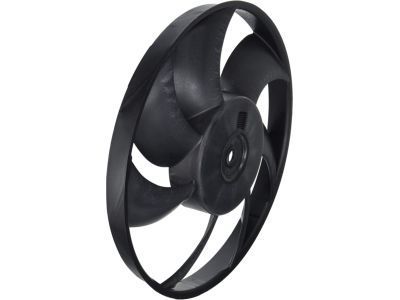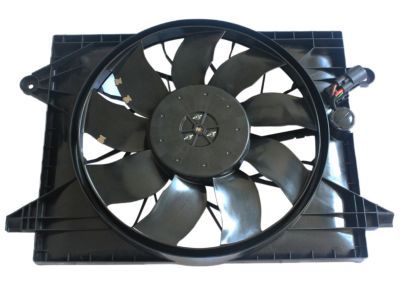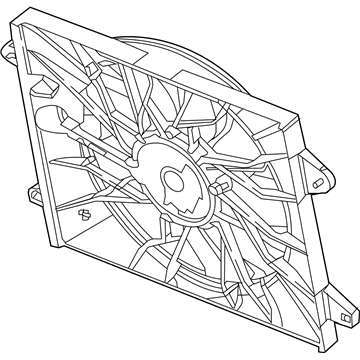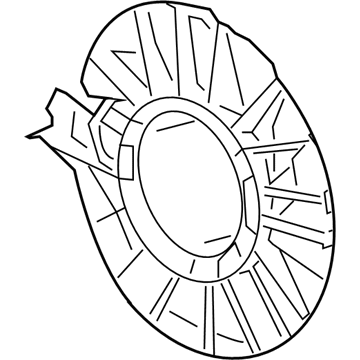×
- Live Chat
- 1-888-511-3595

My Garage
My Account
Cart
Genuine Dodge Charger Engine Cooling Fan
Radiator Fan- Select Vehicle by Model
- Select Vehicle by VIN
Select Vehicle by Model
orMake
Model
Year
Select Vehicle by VIN
For the most accurate results, select vehicle by your VIN (Vehicle Identification Number).
6 Engine Cooling Fans found
Dodge Charger Fan ASSY.-Radiator Cooling
Part Number: 68050129AA$303.60 MSRP: $461.00You Save: $157.40 (35%)Dodge Charger FANMODULE-Radiator Cooling
Part Number: 5181995AB$1419.00 MSRP: $2155.00You Save: $736.00 (35%)
Dodge Charger Engine Cooling Fan
Looking for affordable and high-quality auto parts? Then you have already arrived at the proper online shop. We offer all Dodge Charger Engine Cooling Fan at great affordable prices. Moreover, all genuine Dodge Charger Engine Cooling Fan come with a manufacturer's warranty. In the long run, you would realize you have saved a lot of trouble and money with OEM parts from here.
Dodge Charger Engine Cooling Fan Parts Questions & Experts Answers
- Q: How to Replace the Cooling Fan on My Dodge Charger?A: These models are equipped with two cooling fans mounted side-by-side behind the radiator. The PCM (Powertrain Control Module-engine computer) and three relays are used to operate the fans at Low or High speeds depending on engine needs and other conditions. The fans are protected by fuses inside the engine compartment's fuse/relay box. If the engine is overheating and neither of the cooling fans operate, check the fuses for the fans. Locate the fuses in the engine compartment fuse/relay box. Remove the fuse(s) and check them for continuity. If the fuses test good, check each cooling fan motor by unplugging the fan motor electrical connector and applying battery power directly to the motor terminals with fused jumper wires. When done correctly, the fan should come on. If a fan motor doesn't work, replace the motor. If the fan motors are okay but are still not coming on when the engine gets hot, the fan relays might be defective. Locate the relays in the engine compartment's fuse/relay box. You can pull each relay out and test them individually. If the fuses, motors and relays are functional, check all wiring and connections to the fan motors. If no obvious problems are found, have the cooling fan system and circuit diagnosed by a dealer service department or repair shop with the proper diagnostic equipment. To replace the cooling fan, disconnect the cable from the negative battery terminal, then disconnect the cooling fan electrical connector. Partially drain the cooling system. Remove the upper radiator hose. Remove the cooling fan shroud assembly mounting fasteners. Remove the cooling fan assembly by pulling it straight up and out of the engine compartment. If you are replacing a motor, remove the fan blade mounting nut to separate it from the motor. Remove the mounting fasteners for the motor and separate it from the shroud assembly. Installation is the reverse of removal. Be sure to engage the bottom of the fan assembly with the plastic mounts that hold it to the bottom of the radiator.
Related Dodge Charger Parts
Browse by Year
2023 Engine Cooling Fan 2022 Engine Cooling Fan 2021 Engine Cooling Fan 2020 Engine Cooling Fan 2019 Engine Cooling Fan 2018 Engine Cooling Fan 2017 Engine Cooling Fan 2016 Engine Cooling Fan 2015 Engine Cooling Fan 2014 Engine Cooling Fan 2013 Engine Cooling Fan 2012 Engine Cooling Fan 2011 Engine Cooling Fan 2010 Engine Cooling Fan 2009 Engine Cooling Fan 2008 Engine Cooling Fan 2007 Engine Cooling Fan 2006 Engine Cooling Fan 1987 Engine Cooling Fan 1986 Engine Cooling Fan 1985 Engine Cooling Fan 1984 Engine Cooling Fan






















